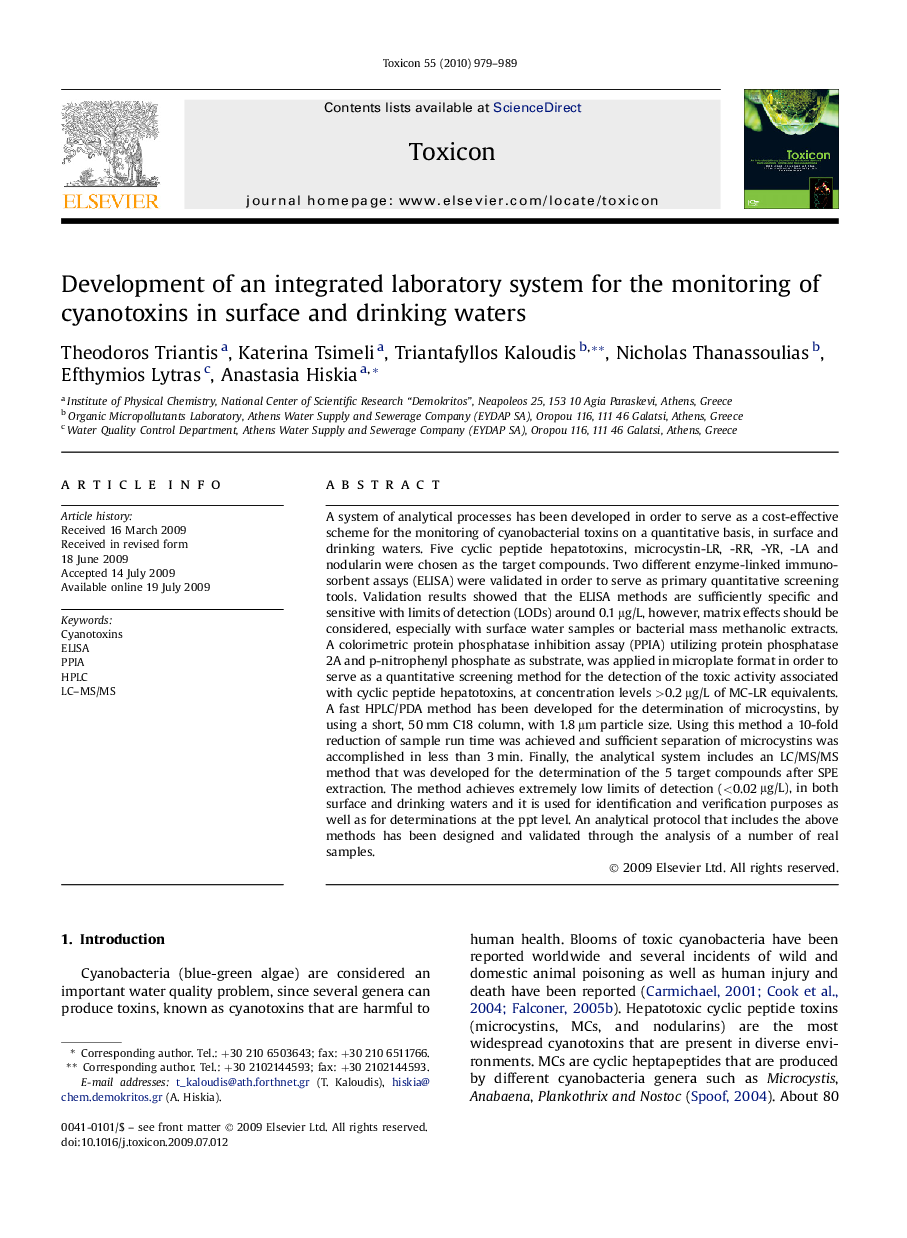| کد مقاله | کد نشریه | سال انتشار | مقاله انگلیسی | نسخه تمام متن |
|---|---|---|---|---|
| 2066404 | 1077105 | 2010 | 11 صفحه PDF | دانلود رایگان |

A system of analytical processes has been developed in order to serve as a cost-effective scheme for the monitoring of cyanobacterial toxins on a quantitative basis, in surface and drinking waters. Five cyclic peptide hepatotoxins, microcystin-LR, -RR, -YR, -LA and nodularin were chosen as the target compounds. Two different enzyme-linked immunosorbent assays (ELISA) were validated in order to serve as primary quantitative screening tools. Validation results showed that the ELISA methods are sufficiently specific and sensitive with limits of detection (LODs) around 0.1 μg/L, however, matrix effects should be considered, especially with surface water samples or bacterial mass methanolic extracts. A colorimetric protein phosphatase inhibition assay (PPIA) utilizing protein phosphatase 2A and p-nitrophenyl phosphate as substrate, was applied in microplate format in order to serve as a quantitative screening method for the detection of the toxic activity associated with cyclic peptide hepatotoxins, at concentration levels >0.2 μg/L of MC-LR equivalents. A fast HPLC/PDA method has been developed for the determination of microcystins, by using a short, 50 mm C18 column, with 1.8 μm particle size. Using this method a 10-fold reduction of sample run time was achieved and sufficient separation of microcystins was accomplished in less than 3 min. Finally, the analytical system includes an LC/MS/MS method that was developed for the determination of the 5 target compounds after SPE extraction. The method achieves extremely low limits of detection (<0.02 μg/L), in both surface and drinking waters and it is used for identification and verification purposes as well as for determinations at the ppt level. An analytical protocol that includes the above methods has been designed and validated through the analysis of a number of real samples.
Journal: Toxicon - Volume 55, Issue 5, May 2010, Pages 979–989